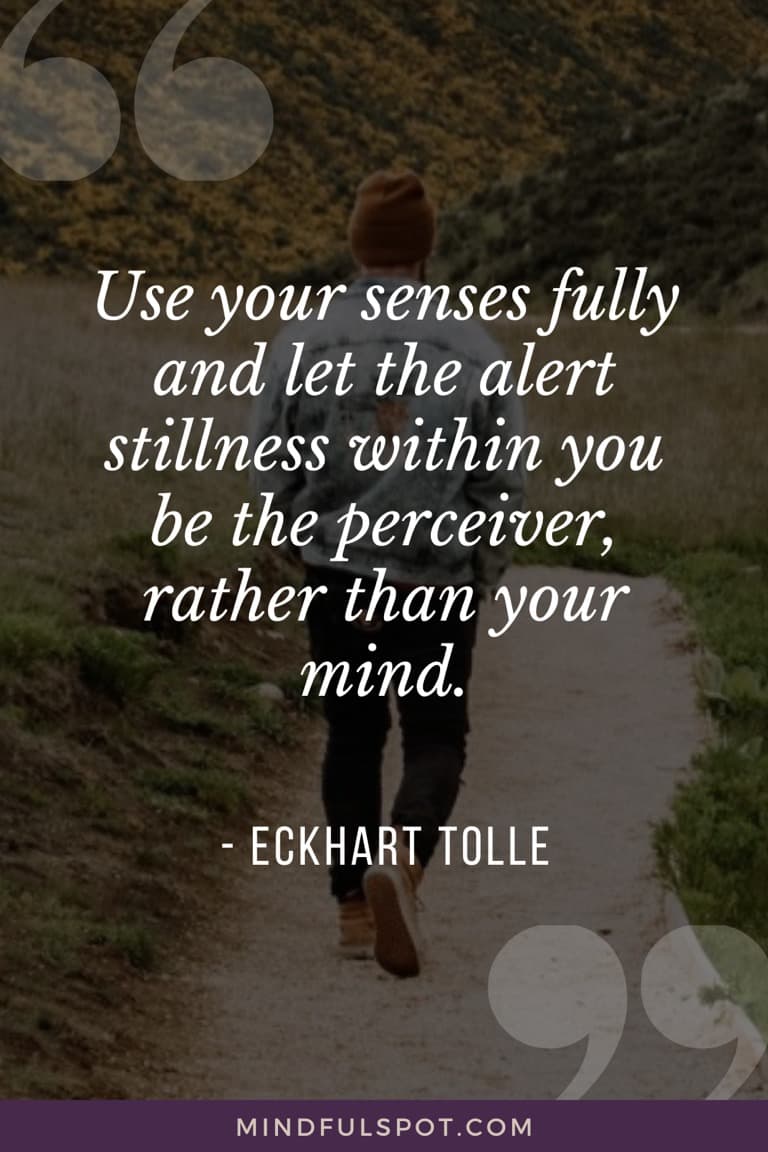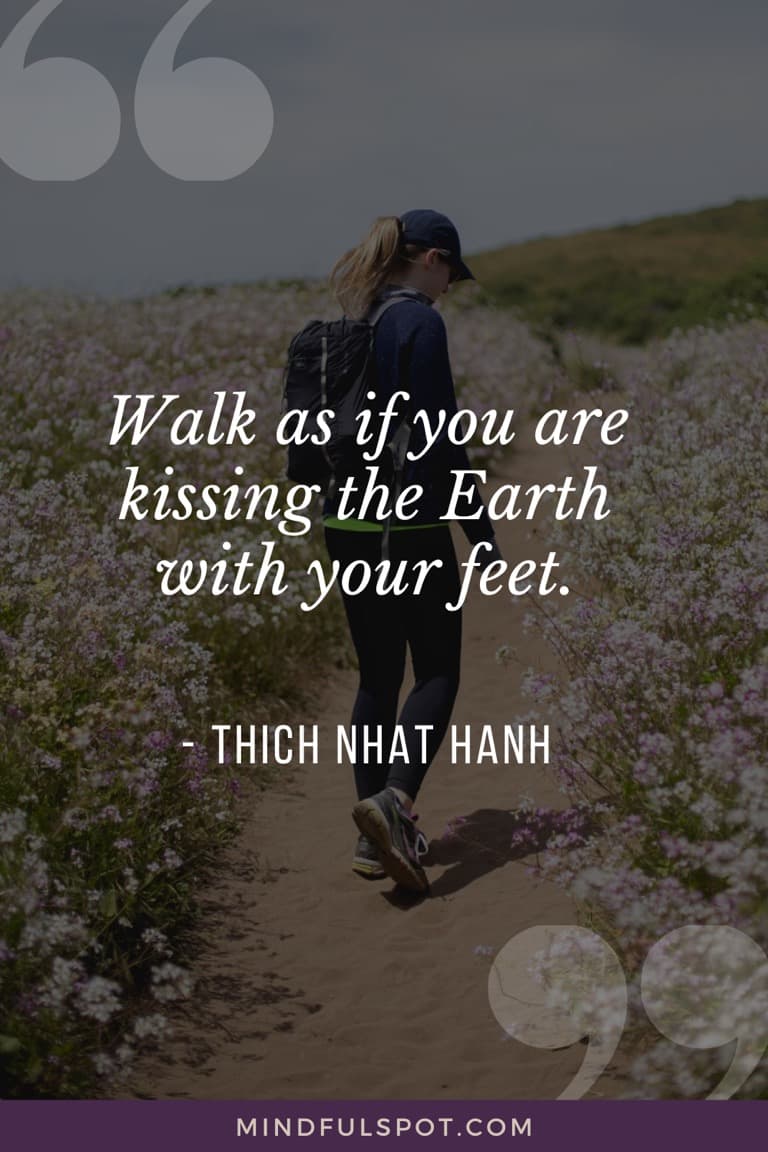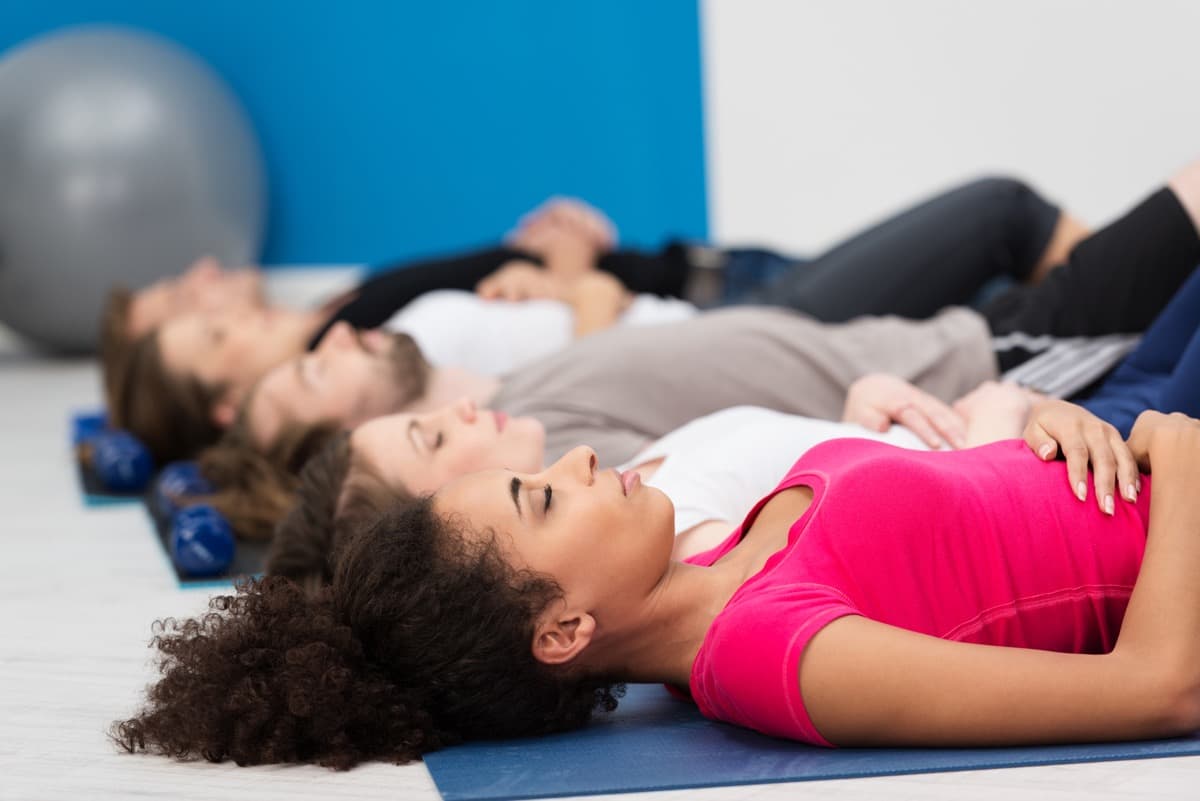At some point, all of us lost the ability to be fully present while taking familiar paths of everyday life.
The time spent going from one place to another seems meaningless and unproductive. It’s something we have to do. We always feel the need to be somewhere else; we don’t want to be where we are right now.
Walking meditation counteracts this tendency and helps us feel grounded and present wherever we go. Even 10 minutes of walking meditation can make us more present and alive, naturally extending our sitting practice beyond the meditation cushion.

Join Mindful Spot Patreon Community
Hi, I've just launched a new Patreon page and invite you to become one of the founding members. Here's what you'll get when you join:
- Behind-the-scenes updates
- Access to exclusive articles
- Monthly Zoom meetings and discussions
Click the button below to become a member and support our mission.
Join PatreonWhat Is Walking Meditation?

Walking meditation is a way to apply the qualities of meditation and principles of mindfulness to the act of walking.
Similar to mindful breathing, walking meditation requires a point of concentration that can keep you grounded in the present moment.
The sensation produced by the sole of your feet when you walk can serve that purpose, bringing you back whenever you lose concentration or your mind wanders off.
But this doesn’t mean that you need to exclude everything else. On the contrary, walking meditation opens you up to the beauty of your everyday surroundings.
How to Practice Mindful Walking in Everyday Life
Here are the five steps of mindful walking from the book The Headspace Guide to Meditation and Mindfulness by Andy Puddicombe, a former monk and the founder of Headspace.
1. Observe the Way You Walk
Without trying to change the way you’re walking, simply observe how it feels. Much like the breath, the walking process is so automated and conditioned that you won’t even need to think about it. So just take a moment to observe it, to notice it. It’s quite common to feel self-conscious when you do this, but the feeling usually passes quite quickly. [Spend about 30 seconds on this activity.]
2. Notice What’s Going On Around You
Begin by noticing what you see going on around you. It might be people walking past, shop window displays, cars, advertisements and all the other things you’d expect to see around you in a busy city.
If you live in the countryside, it’s more likely to be fields, trees and animals instead. Notice the colors and shapes, the movement and perhaps the stillness too. There’s no need to actually think about what you’re seeing—simply to see it and acknowledge it is enough. Take about 30 seconds to do this.

3. Listen to Sounds
Then turn your attention to sounds—what can you hear? Perhaps it’s the sound of your feet on the pavement, of cars passing by, of birds in the trees or of people talking. Without getting caught up in thinking about the objects of sound, just take a moment to be aware of them, as though they are just coming and going in your field of awareness. Again, take about 30 seconds to do this.
4. Turn Your Attention to Smells
Next turn your attention to smells for 30 seconds or so, some of which may be pleasant while others might be positively unpleasant. Perhaps it’s the smell of perfume or aftershave, of car fumes and petrol, of food and drink, or fresh cut grass and plants. Notice how the mind habitually wants to create a story out of each of the smells, how it reminds you of somewhere, something or someone.

5. Notice Any Physical Sensations or Feelings
Finally, make a point of noticing any physical sensations or feelings. Perhaps it’s the feeling of warm sunshine, cool rain or a cold breeze. Perhaps it’s the sensation of the soles of the feet touching the ground with each step, or the weight of the arms swinging at your side, or even something painful like tight shoulders or that dodgy knee again. The intention is to simply acknowledge the sensations for 30 seconds or so, without feeling the need to get involved in thinking about the feelings.
When you complete all five steps of this walking meditation, you can go back to step one and repeat it all over again. Feel free to experiment with the duration of each step.
Make Walking Meditation a Natural Part of Your Routine
Start small: Try to follow the steps described above the next time you need to go somewhere. You’ll immediately feel calmer while also turning a routine activity into a meditative exercise. To help you get started, I’ve created a free worksheet you can download below:
I’m a freelance writer and mindfulness advocate behind this blog. What you see here is the combination of my three favorite things: reading, writing, and mindfulness. While you’re here, subscribe to my blog updates and gain access to free mindfulness resources for stress relief.









I too love love walking in the morning and putting headphones to listen devotional songs. I listen to it in morning to stay connected with god and also not to feel alone during walk. But this meditation practice can also be one of the best way to utilize our time. I will surely follow your tips. Thanks for adding valuable post!
Hey Rahul, walking meditation is one of my favorite ways of bringing more mindfulness and presence into everyday life. Thank you for sharing your own experiences, I appreciate it.